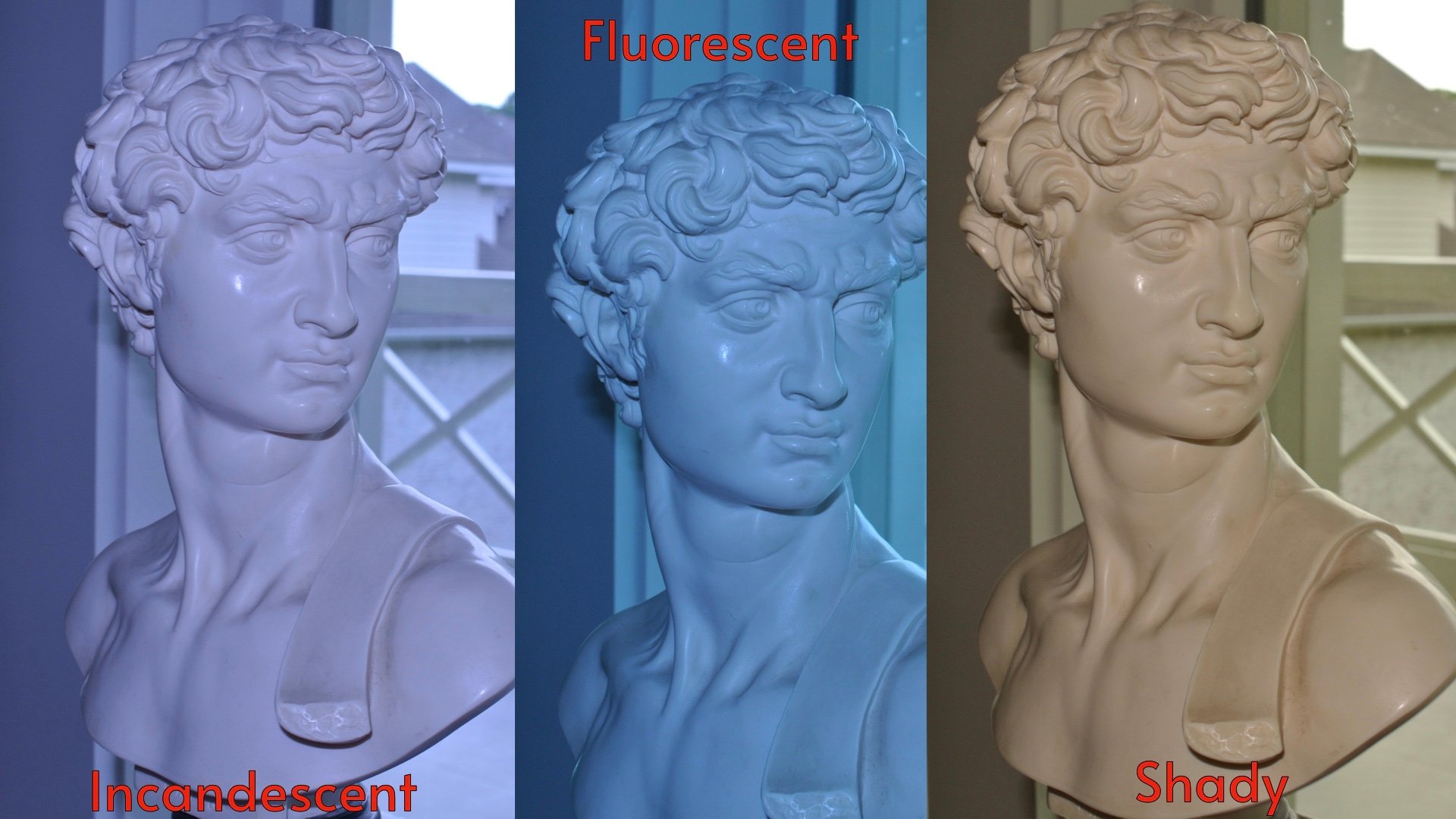

Changing your White Balance can dramatically alter the color landscape for your photography.
Sometimes, the camera’s built-in Picture Color Modes, AKA Creative Control Modes (e.g., standard, vivid, monochrome, etc.) just don’t adequately capture the mood of the moment. For example, say that you’d like to accentuate an atmospheric winter scene with an additional slight blue cast or kick up the temperatures of a sizzling hot summer shoot with an extra dose of sultry lighting hot stuff. Unfortunately, your camera might not be capable of injecting your preferred amount of lighting tint through its onboard color modes. Or is it?
Figure 1. Our subject model for demonstrating changes to color control mode and white balance. This is the standard color control mode for a Nikon 1 J1.
Figure 2. The vivid color mode from a Nikon 1 J1.
Figure 3. Applying a monochrome color mode to our model.
Just about every digital camera on today’s market, even those low-cost, plastic pieces of junk (PoJ), has this colorful lighting capability hidden in plain sight.
Alright, a show of hands; who’s ever taken a camera’s white balance setting off of “Auto?” Exactly; no one! OK, maybe that one photographer who actually takes portraits underneath tungsten lighting… Certainly, not more than a handful of photographers. Why doesn’t everyone else fiddle around with the white balance? Because it works, “good ’nuff,” for almost all lighting situations. End of story.
Well, not so fast Edward Weston. Flexing your White Balance muscle can make your photos pop in color expression with a different look than you’d get from using your typical color control modes. For example, if you’d like your camera’s manufacturer to introduce a film simulation for Lomography LomoChrome Color ’92 Sun-Kissed film (buy here), please don’t hold your breath. Rather, select “Shade” for your camera’s White Balance and behold a radiant warmth engulfing your photograph giving you a pretty good approximation of ’92 Sun-Kissed film (see Figure 4).
Figure 4. A “sun-kissed” film simulation at the beach can be obtained with the Shade White Balance setting.
Likewise, using the Tungsten White Balance setting can introduce an ethereal twilight color cast to your photographs during more manageable daylight hours. But don’t stop there; try all of the different lighting source settings for White Balance on your camera (see Figures 5 and 6).
Figure 5. Setting color mode to “None,” but altering the White Balance to Fluorescent.
Figure 6. Keeping color mode on “None,” however, switching the White Balance to Shade.
Furthermore, these White Balance lighting sources can be combined with your camera’s color control modes. One of the ideal scenarios for this unlikely combination is using the camera’s Monochrome color control mode with various White Balance settings (see Figure 7). This oddball technique is a great simulation of adding a color filter to black and white film (see Figure 8). Sure, some cameras have these types of color filter simulations, but if your camera is lacking this capability, an altered White Balance could come to your rescue. After lengthy experimentation with these various “combo” techniques, avoiding “Auto” White Balance might become your preferred setting.
Figure 7. A typical forest scene using the camera’s monochrome color mode.
Figure 8. The same scene from Figure 7 with an additional alteration in the White Balance to Fluorescent.
[Please note: not all camera manufacturers include a “Tungsten” White Balance setting. For example, the Nikon 1 J1 shown below does not) Try “Incandescent” and “Fluorescent” as alternatives.]
Figure 9. Lacking a Tungsten White Balance setting, a Nikon 1 J1 user could try either Incandescent or Fluorescent, instead.
Do you shoot on auto white balance?






